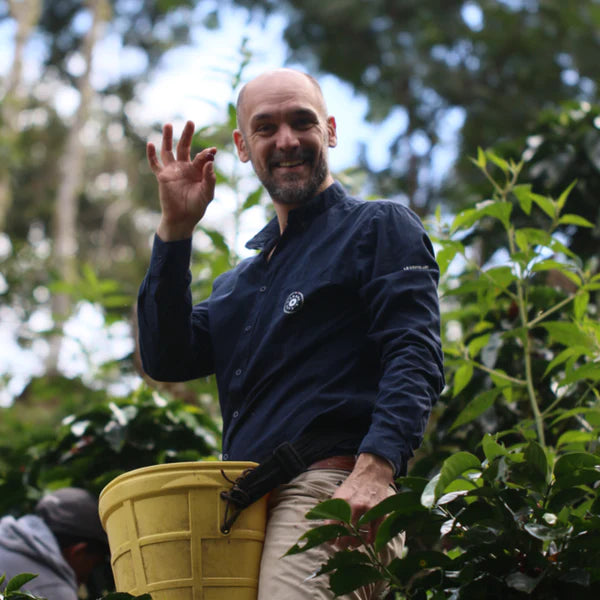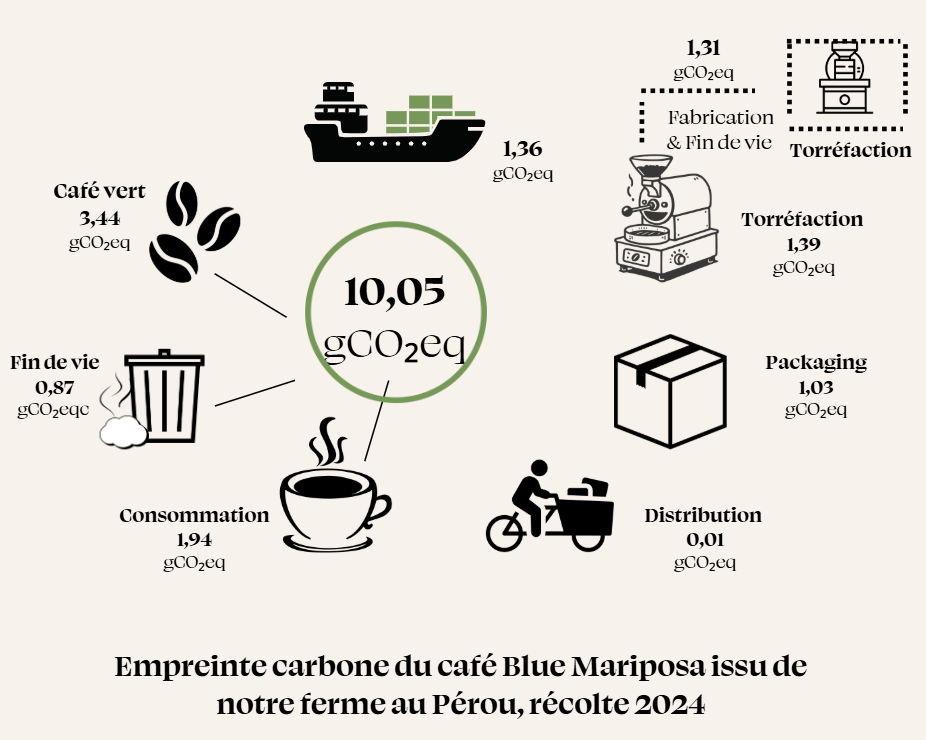It is part of our daily life. The morning coffee, when we wake up, the one during the break at work or even the one we drink with friends. It accompanies us in our daily life. Stimulating for some, greedy for others, it is one of the most popular beverages in the world, with more than 2 billion cups served every day.
Let's discover the origin of this drink so common and yet so little known.
Coffee plants and plantations
The coffee tree is a shrub of the Rubiaceae family that can reach between 10 and 20 meters in the wild, depending on the species, while the Arabica does not exceed 4 to 5 meters. Its leaves are dark green and waxy and its flowers small and white. It is only after two or three weeks that the coffee gives its first flowers. About six to eight weeks after flowering, the flowers turn into fruit: cherries. The color of the ripe cherries changes depending on the variety, from orange-yellow to red, pink and even purple. Inside the fruit are the precious coffee beans.
The density of planting per hectare and the type of pruning vary greatly according to region and context. On hillsides, farmers prefer small trees, called dwarf or low bearing varieties, such as Caturra (like the one in Chakra Do Dago), as they are easier to harvest. Whereas in flat terrain, high bearing varieties such as Bourbon (Bombo) or Typica are preferred. Similarly, average temperatures and rainfall, as well as altitude and soil type, determine which species and varieties can be grown. While high altitudes and temperatures below 25° C are preferred for Arabica, low altitudes and warmer climates are more suitable for Canephora like that of Uganda and Liberica like that of Claudio Corallo in Sao Tome .
Species, Varieties and Terroirs
Biologists are used to classifying nature into genus, species and variety or population. In the animal world, this is very familiar to us. For example, in the genus of Equidae (Equus), there are three species: donkeys, horses and zebras, and in each of these species, multiple races (varieties). For coffee, the genus is coffea, and there are more than 124 different species. Not all of them are edible, most of them lack caffeine, and some are endangered. Today, it is estimated that 4 or 5 species are mainly cultivated in the world, but it is mainly Arabicas and Robustas that dominate world production.
-
Arabica, which represents 60% of the world consumption.
-
Canephora(Robusta or Conillon), representing 40% of the world consumption
-
Liberica which corresponds to +/- 1% of the world consumption.
Each of these species is characterized by multiple populations or varieties, and each has its own specificities.
Arabica is known to be more sensitive to heat, sunburn and disease. The trees of this species therefore need shade and moderate temperature and grow at higher altitudes than the others. They also produce less cherries than the Canephora. In the cup, this species is known for its aromatic complexity and sweetness as well as its lower caffeine content than Robusta and Liberica.
The Canephora, which is divided into two large groups, the Robustas and the Conillons, are more resistant to diseases and insects. The trees prefer sunny plains and high temperatures, and low altitudes (up to 800 m.). This species is more productive, its fruits contain more caffeine (up to 5 times more than some Arabica), and are often marked by an earthy, full, bitter and powerful cup.
As much as Arabica varieties are beginning to be known by coffee lovers, and indicated on coffee packages: Caturra, Bourbon, Typica, Catimor for the most widespread, Gesha, SL28 for the most prestigious, as for Canephora, even among professionals, the varieties are little known, yet two large distinct families share the world: Robusta as in Africa and Vietnam, and the Conillons in Brazil mainly. Some countries are more specialized in one or the other species, such as the Ivory Coast with Robusta, but the norm remains the cultivation of both according to the altitudes. Thus Brazil is the second largest producer of Canephora and the first of Arabica,
It is often said that 80% of the quality of coffee comes from the quality of the seed, both the genetics and the health of the seeds planted, yet it is surprising to see how some varieties, not very qualitative on paper, because resulting from crossing with Canephora, give extraordinary coffees. This is the case of Castillos or Colombia in Colombia, Panairema in Honduras or Iapar in Brazil. In fact, the terroir plays a considerable role in the expression of this or that quality in a cup. The case of Gesha is well known, cultivated in Panama, it will be of remarkable finesse and complexity, while in Costa Rica or Colombia, although neighbors, it will be less fine and sometimes less intense.
Finally, one of the indicators that show how important terroir is is the spontaneous appearance of new varieties. Indeed, throughout history, many varieties have mutated spontaneously and thus "appeared" on a specific terroir. This is the case of the Bourbon pointu, the famous Laurina, in Reunion Island, a natural mutant of the Bourbon, the Blue Mountain in Jamaica or the Kona, two prestigious coffees, sons of the Typica, or the Caturra, the Maragogype in Brazil, the Pacamara in El Salvador, or the Villa Sarchi named after the Costa Rican village where it was discovered.
Geography and history
The paradox of this apparent diversity is that all these varieties have their origins in only a few terroirs and a few plants of two varieties, Typica and Bourbon.
All coffees are African. It is often said that coffee is the African revenge of cocoa, which is South American and has been spread all over the world, especially in Africa. Coffee has its origins in Africa. In the Horn of Africa and more particularly in Ethiopia for the Arabicas, in Equatorial Africa and the Gulf of Guinea for the Canephora and the Robusta.
While Canephora were not widely distributed and used by the Africans themselves, Arabicas spread rapidly in Yemen, which became both a producing region and a trading place.
It is finally between the XVIIth and the XVIIIth centuries that the Arabica has its cradle, first for India, then under the impulse of the Dutch who planted the Typica, variety taken in India, in the current Indonesia then Dutch Antilles and Surinam, of the French on the other hand, who diffused the Bourbon, Yemeni variety acclimatized in the current Reunion, as well as the Dutch Typica as well in the Antilles as in Guyana. From these few plants disseminated by these two European countries, was born almost the entire world orchard of Arabica!
For the Canephora, it is necessary to wait for the second age of the colonization, that is to say the end of the XIXth century and the beginning of the XXth so that it leaves its original borders and that it conquers in its turn, the world.
The Coffee Belt now includes all the tropical and equatorial countries, that is to say more than 90 countries in the world, including surprising countries such as Australia and the Galapagos Islands or the Canaries! As we wrote earlier, the same variety has a different taste depending on its terroir, that's why we associate certain tastes to certain countries, but this subject would deserve an article in itself.
To conclude, coffea is native to Africa, and therefore all its 124 listed species are African! As all the plants diffused thanks to the colonizations and whose production is destined to the old metropolises, for a long time, the coffee growing was characterized by a weak biodiversity. Fortunately, by acclimatizing to different latitudes, new varieties have appeared, either spontaneously or thanks to the hand of man. Thus, the community of coffee lovers can enjoy a myriad of varieties that express themselves differently depending on the terroir and the vintage.




















